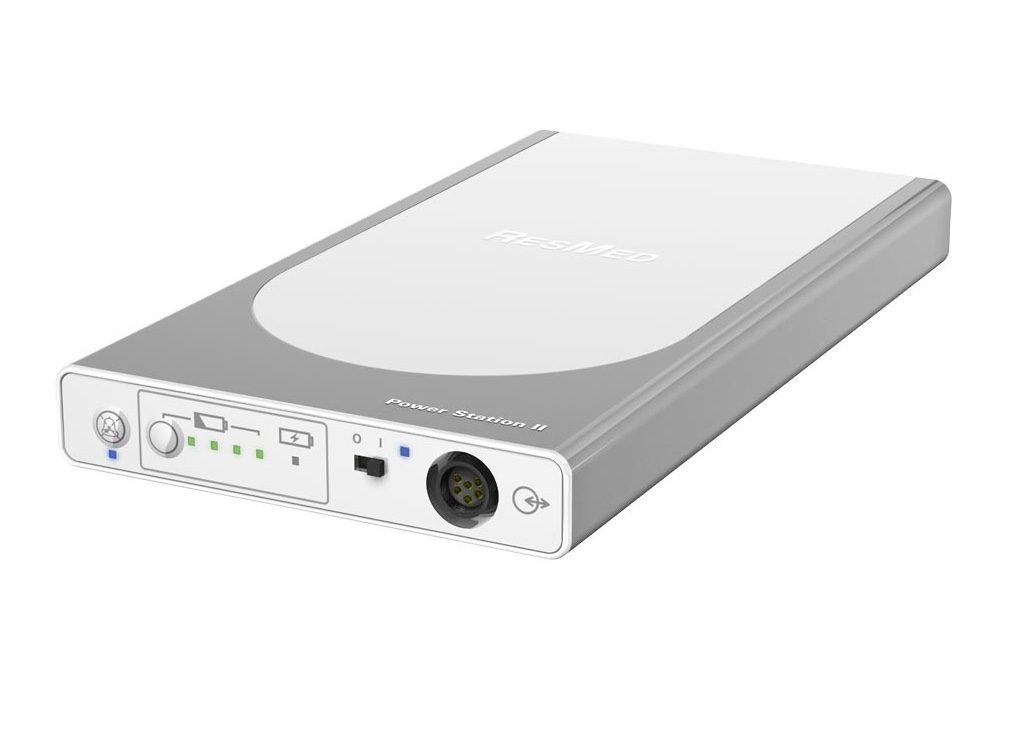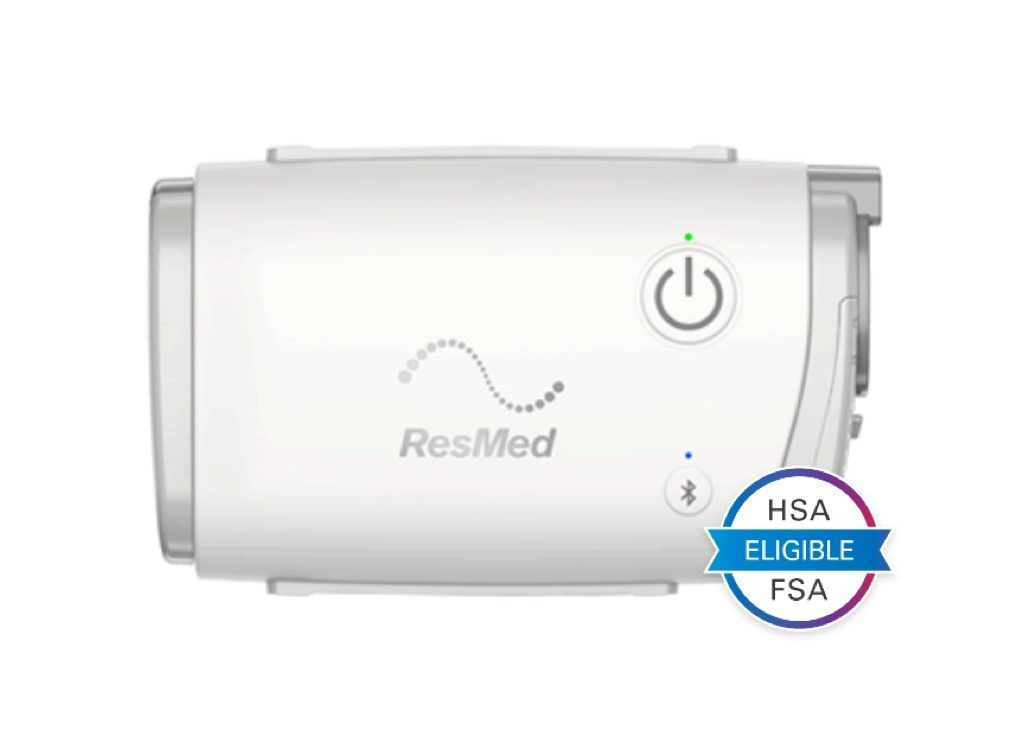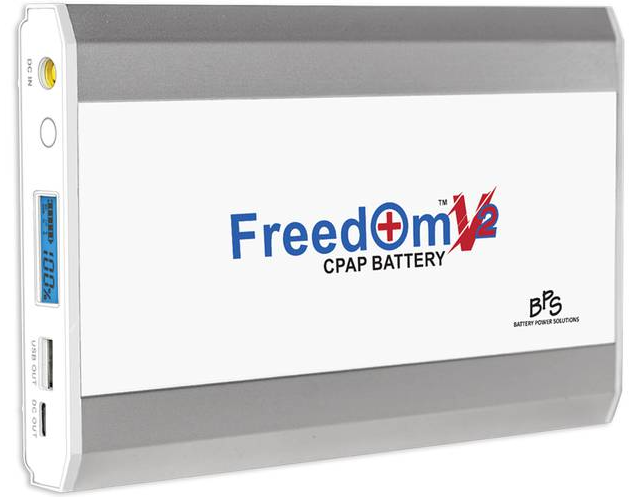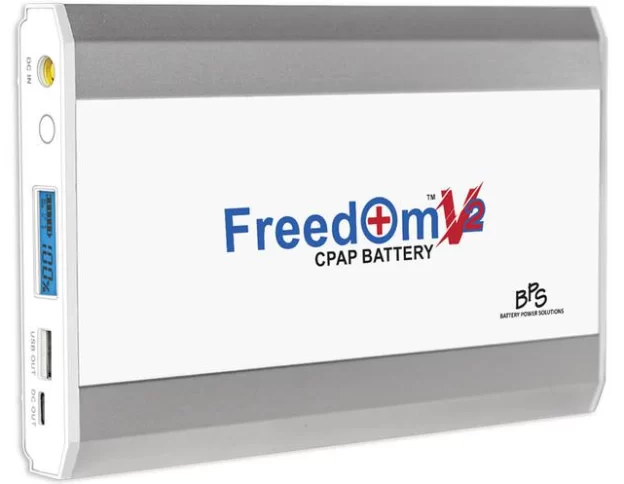Sometimes you need to travel or want to go camping. If you are a missionary, you may live in a location with unreliable power. How do you maintain stable power for medical devices like a CPAP?
ResMed and other manufacturers of CPAP machines make alternative backup and portable power solutions though they are expensive. The advantage is that these devices have been tested and are proven to work.
Most CPAP machines can run on 12V DC power by using an adapter cable with the correct plug on each end, or using a cable with a DC-DC voltage converter in the middle. See this video by CPAP.com for a good overview. Machines that can only run on 120V or 220V AC power will waste more power and be less convenient when traveling or living off-grid; you might consider getting a new machine before traveling.
For the rest of this article I’m going to assume we’re running our CPAP off a 12V Battery and will talk about power needed using amp-hours (Ah) because that’s how 12V batteries are rated. Just remember you can’t directly compare the Ah rating to that of a power bank or 24V battery because the voltage is different, as explained in our What’s Watt? article.
If you are living in a remote setting with a solar panel and batteries the power requirements of the CPAP machines can be calculated into the design of your home’s power system. A cigarette lighter socket could be installed conveniently in a bedroom for use at night. My Resmed Airsense 11 uses almost 7 amp-hours on an average night. ResMed sells a power cord designed to work from a car cigarette lighter socket. I know about ResMed because I use one.

Most alternative power system vendors, such as Bluetti, will give you a run time for various appliances including a CPAP machine. The Bluetti eb3a is rated 256Wh, and is equivalent in storage capacity to a 12V 21Ah lithium battery. It would be sufficient to run a CPAP for 2 or 3 nights plus power a light, charge a phone, etc. These are a good solutions for camping on a weekend, or traveling in the USA by car, but they are a bit bulky for anything else. Most importantly, you can’t take a lithium battery this big on an airplane when you travel; the upper limit is 100Wh per battery.

I used a 12V 50Ah Lithium Iron Phosphate battery and a DC to DC converter to run my CPAP machine for 2 months. On average I got 2 nights out of a single charge. When the humidifier was on the average power used was about 14 amp-hours during 7 hours of sleep. With the humidifier turned off the total power used was less than 8 amp-hours during 7 hours. Resmed recommends keeping the humidifier off when using batteries because it can nearly double the power needed.

The power requirement varies widely depending on the amount of time used, whether the CPAP mask stays in place or if the hose became disconnected during the night.
There are batteries available that will provide the required power for your cpap. For example: Battery for Airsense 11 Cpap You will also need a DC to DC converter to provide the correct voltage for your CPAP. The above Airsense battery has DC to DC converter built in. They recommend that you do not use the humidifier chamber when running on battery power because it draws a lot more power, shortening your run time. With the humidifier on my CPAP drew 20 Ah. Without the humidifier it used 5 Ah.
Recommended CPAP for Travel or Village

If you travel a lot by air or on foot (hiking) or will be working in an off-grid village we recommend the ResMed Air Mini Travel CPAP. This is a small CPAP designed specifically for travel which has better than average power efficiency. And if your destination has intermittent or nonexistent power, you will need a battery. The Air Mini will work very well with the Freedom V2 CPAP Battery. We recommend buying 2 batteries so you have some reserve for when things don’t go as planned.
Recommended Battery for CPAP Travel

The Freedom V2 battery Freedom V2 is a Lithium Ion battery capable of running a CPAP machine for one night. It’s capacity is 99.9Wh, the maximum allowable on passenger airlines. (Equivalent to a 12V, 8Ah battery) The Air Mini can draw as little as 33Wh over a single night, or as much as 99Wh, depending on how much breathing assistance you need. When ordering the Freedom V2 be sure to request the adapter cable for your CPAP machine. Freedom sells a complete kit for the ResMed Air Mini (Model # SV2)
We recommend the Freedom V2 battery because it is small, light, and is designed to power the Air Mini and similar CPAP machines. It has multiple ports so it can power a laptop and other devices as well as recharge a cell phone. With a 90W power source the Freedom V2 will recharge in 2-3 hours. In addition, two of the Freedom V2 batteries can be connected together to act like a single larger battery, but they are still legal to carry on a passenger airline. No more waking up at 4AM with a dead battery!
While I have been discussing Resmed CPAPs the principles outlined above apply to any CPAP setup. The principle is to make sure the battery you choose is compatible with your CPAP and will provide enough power to run it all night.
The best approach for anyone using a CPAP is to first decide whether you will be using AC or DC to power your CPAP. Since most CPAP machines are prescribed by a doctor you need to consult with a doctor about your options. The manufacturer lists the power requirements in the specifications section of the user manual supplied with the unit. You can also determine how much power your CPAP uses by plugging it into an energy watt meter. The watt meter is then plugged into the wall outlet. The meter will then tell you how much power it used while you were sleeping. If you use a battery the same thing can be done using a DC watt meter.
A Personal note
I have been using a CPAP machine for about 10 years. For the past 2 months I have used a battery and kept careful records of the power my machine has used each night. My battery is a 12V, 50Ah Lithium Iron Phosphate battery. I have found that my battery will supply power for 2 nights without recharging. I have about 600 watt hours available when my battery is fully charged. I did run out of battery one night and had to switch to the wall outlet (AC power). That night my mask came off and the machine was blowing air at maximum pressure for awhile.
If you are in a village setting and not traveling we recommend that you run your cpap machine from a large battery. If you are starting out and building a new electrical system (off grid/solar) we suggest designing your cpap machine’s power requirements into the system. To avoid running out of power in the middle of the night we recommend you have 300Wh (minimum) available per night. This means you need (at least) a 12V, 25Ah battery. Some folks have used our Villager-III solar power system for powering their CPAP, but at 18Ah it’s a little smaller than what we would recommend for a “permanent” village setup. And remember, we’re always here to help you. Simply email us your questions at power_systems@sil.org.
